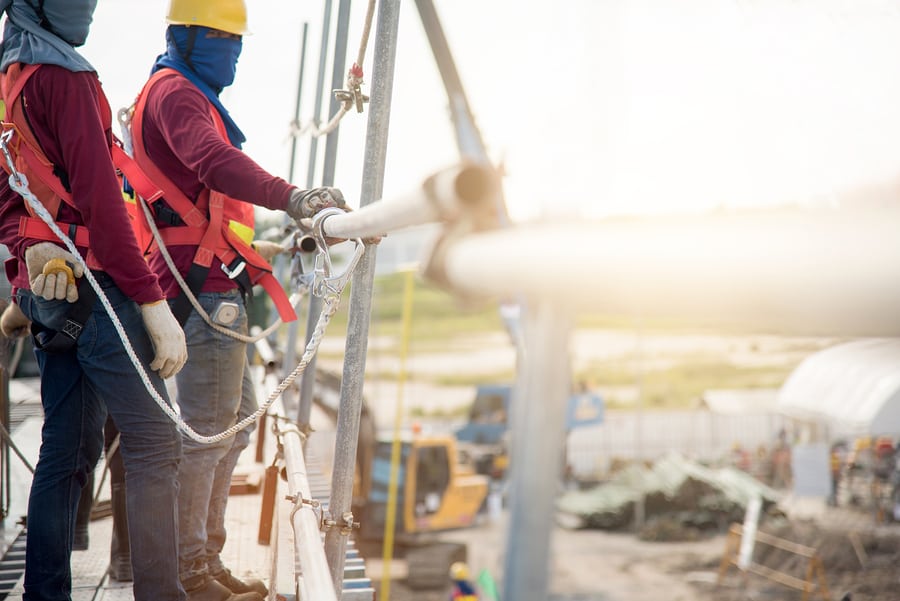Construction sites are inevitably dangerous places to work, housing a myriad of possible hazards and conditions which are conducive to injury. In 2016/2017, construction was unsurprisingly found to be the industry with the most fatal industries present for employees. Nonetheless, if proper precautions are taken, risks can be mitigated. Here we inform you on 5 of the biggest construction site hazards which you should manage.
1. Falling from a height
According to a report from the UK, approximately one-quarter of all worker deaths occur due to falling from a height. Any employee working at height thus needs to be adequately trained in working on a variety of equipment and surfaces at height, using ladders and scaffolding appropriately, as well as any other relevant equipment. Construction site managers must perform a risk assessment which identifies their employees’ risk of falling from heights, ensuring that all appropriate preventive measures are in place and that all employees are adequately trained. If any work being conducted at height could indeed be done on the ground, be sure to take this precaution. Furthermore, consider setting up harnesses and safety nets which would cushion falls if they were to happen.
2. Slips, trips, and falls
Although these can happen in any workplace, construction sites are more likely to be littered with uneven surfaces and debris, making slips, trips, and falls more likely than in typical workplaces. It is thus crucial to maintain work areas and access routes appropriately, ensuring that things such as footpaths and stairs are free from debris or equipment and are well-lit throughout the day. Be sure to keep an eye on things such as cables and cords, especially if cordless tools cannot be used for the tasks at hand. Also, as many parts of a construction site will be exposed to the elements, it is essential to take the proper precautions if snow, rain, or mud affect the surfaces and how slippery they may be. There are many ways to control surfaces which have been made dangerous by the weather, so be sure to read up on this and keep the appropriate supplies close by.
3. Excessive noise
Although it’s not the first thing you might think of, hearing damage is a very real phenomenon and construction sites are full of very noisy equipment which can damage one’s hearing. As a result, it is imperative that an employer assess noise risks and provide the appropriate PPE, such as ear plugs, where necessary. It’s common for people who work in noisy environments to suffer from tinnitus and hearing loss, things which they inevitably regret later in life as their hearing deteriorates further.
4. Asbestos
Asbestos kills around 5,000 workers every year, making it a major risk on certain construction sites. If you’re working on buildings beyond a certain age, you might certainly encounter asbestos. If you move or damage materials which contain asbestos, the fibers are released into the air, then being breathed in by unsuspecting construction workers. Asbestos can cause numerous serious conditions such as asbestosis and lung cancer, so it must be avoided at all costs.
If working on an older building which may contain asbestos, it is important to have an assessment carried out beforehand and inform your workers about where the asbestos is, ensuring they have the proper training to identify potentially asbestos-ridden materials and protect themselves from the associated dangers.
5. Electrical currents
Certain electrical live parts could be harmful or fatal if touched, whether directly or indirectly. Problems can occur when machinery comes in contact with underground or overhead electrical cables, for example, and electric shocks commonly cause workers to retract (instinctively) and fall from heights too. Some construction sites have even been found to have people working on electrical wires who are not licensed electricians, taking their fate into their own hands. Suffice it to say that anyone dealing with live electrical currents should be fully trained to do so.
Construction sites are always inherently dangerous places to work, no matter how many risk assessments you carry out. If you’ve got questions about reducing accidents at construction sites, give us a call today and speak to one of our team!



